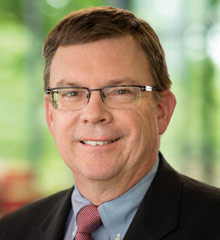In the Preface to the Small Catechism, Martin Luther laments the fact that many come to worship and participate in the sacraments but really have no clue what they are doing.
There is no longer any instruction. He also laments that there are many who do not come to worship anymore because obligatory attendance at “Mass” has been abolished.
One of the traditional places in worship that we deem “instructional” is, of course, the sermon. Preaching is not only teaching, but it can be an important component. At the same time, Luther’s concern pushes us to think of the whole liturgical event as instructional.
In his concern about instruction, Luther is repeating a warning he already gave in the preface to the German Mass. We should not think that because we already have the Gospel, we do not need to worry about instruction, rites, etc. Such an attitude is a total misuse of Gospel freedom, he writes.
Rather, precisely because we have the Gospel, we should worry all the more about instruction and worship rites. Here, rites are understood as all the actions in worship, including preaching. The little conjunction “and” between “preaching” and “worship” is really not legitimate, for preaching is part of worship and worship is preaching.
Luther’s concern, of course, was with proclamation. But, contrary to later developments in the history of preaching and worship that emphasized preaching over and above liturgical rites, Luther was also concerned that worship rites themselves proclaim the Gospel. Therefore, he insisted that people know what they are doing when they come to worship. For it is in the rites themselves that a community is formed in proclamation as a Gospel community.
This formation as Gospel community happens in obvious ways: through preaching and communal singing. But it also happens through the very structure or patterning of worship.
Through worship, believers are immersed into a pattern of Gospel living that is very often counter-cultural (which is perhaps a reason why we prefer to minimize it!). This formation happens in simple ways, such as indicating on what days we pray together (Apology to the Augsburg Confession, Articles VII and VIII: The Church). Worship shapes the way we live as a community. But of course, we can also shape worship so that it reflects the way we want to live.
What role does preaching play in this formation? Preaching helps believers more fully participate in all the ritual actions of worship In addition, and for Luther in particular, preaching evokes a deep desire in participants for the sacrament of the altar. To paraphrase the Small Catechism: preach in such a way that people want to come.
But again, I do not want to isolate preaching too significantly. It is important to understand “preaching” in its broadest sense — as proclaiming the Gospel.
We preach not only when we stand in the pulpit and proclaim, but we preach through gestures, through a welcoming presence, through the reading and prayers, through music. Church musicians preach through their instruments and their voices. Play in such a way, we might ask them, that people want to come to the table! We can preach the Gospel through all the ritual moments of worship.
Preaching, as presiding, is continually pointing away from the one enacting the task to the promise that is given. Or, perhaps it would be more accurate to say that the task of presiding at worship (which includes preaching as one of its components) is always pointing away from itself, like John the Baptist, to the One who is coming, Jesus Christ.
Continually inviting one into an encounter with God, into an encounter with the promise, Luther concludes, is a sign of the seriousness of the office of pastor — however it takes much effort and there is often little reward!

